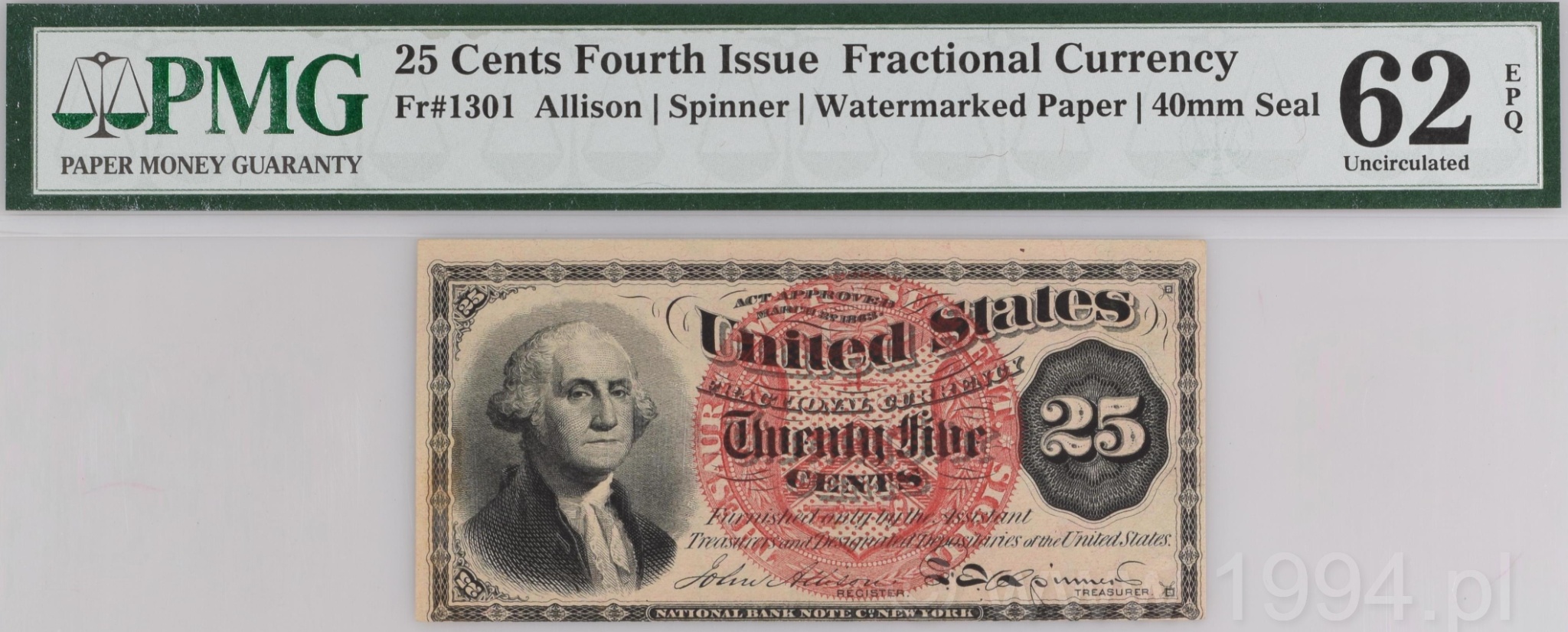Description and research notes
The Fourth Issue of fractional currency, introduced between 1869 and 1875, marked the culmination of America’s Civil War–era experiment with small-denomination paper money. This twenty-five cent note (Friedberg 1301) bears the engraved signatures of Treasury officials John Allison and Francis Spinner and was printed by the National Bank Note Company of New York under government contract. Fractional notes such as this filled the coin shortage caused by hoarding of gold and silver during and after the war.
The design centers on an engraved portrait of George Washington at left, paired with a bold red Treasury seal measuring forty millimeters in diameter—one of the largest applied to any federal issue of the period. The denomination numeral '25' appears within a black geometric panel on the right, framed by intricate guilloche and micro-lettering intended to deter contemporary counterfeiters. The note’s paper is specially watermarked with “U S” repeating across the sheet, a security advancement unique to late fourth-issue printings.
This issue represents the highest technical refinement of fractional note production before the Bureau of Engraving and Printing assumed full control of U.S. currency manufacture in 1877. The National Bank Note Company’s hand-engraved steel plates and two-color presswork demonstrate the artistry and mechanical precision of the era. Certified PMG 62 EPQ Uncirculated, this example shows full embossing and natural paper tone—an exceptional survivor from a series that bridged wartime necessity with peacetime craftsmanship.
